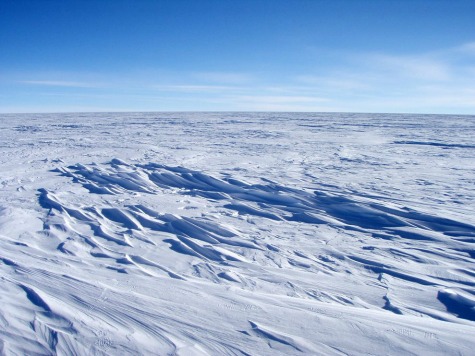So much for global warming. An underwater robot sent by a British and Australian ship near the Antarctic Peninsula returned with data confirming that Antarctic ice is thicker and deeper than previously believed. The robot, called SeaBED, can plunge to a depth of 100 feet, began its mission four year ago, and helped create 3D maps showing the average ice thickness beneath sea level is between 1.4 and 5.5 meters (4.5 to 18 feet).
On Monday, the team responsible for the study asserted in the journal Nature Geoscience, “We suggest that thick ice in the near-coastal and interior pack may be under-represented in existing in situ assessments of Antarctic sea ice and hence, on average, Antarctic sea ice may be thicker than previously thought.” SeaBED traversed both east and west Antarctica, taking measurements across 50 hectares and finding ice as much as 16 meters (52 feet) thick.
Dr. Rob Massom, senior research scientist with the Australian Antarctic Division, explained what had been the procedure measuring ice before SeaBED: “We look over the side of icebreakers and we look at the way that the icebreaker overturns the sea ice and we do a visual estimate on the hour every hour. We also spend many hours drilling many holes through the ice and that’s very labor- intensive.”
But now scientists from Britain, the U.S. and Australia have used the robot for more precise data-gathering. Australian polar oceanographer Guy Williams of the Institute for Marine and Antarctic Studies commented:
These (robots) provided a new view of Antarctic sea ice with three dimensional maps, it’s like going from a broken pair of binoculars to a band new telescope. The full 3D topography of the underside of the ice provides a richness of new information about the structure of sea ice and the processes that created it. This is key to advancing our models, particularly in showing the differences between Arctic and Antarctic sea ice. While we have not measured all Antarctic sea ice thickness and cannot state if Antarctic sea ice is getting thicker, this study is a huge step towards the sort of expanded and more routine measurements we will need to do to truly answer these questions.
Study co-author Ted Maksym, an oceanographer at the Woods Hole Oceanographic Institution in Massachusetts, said, “If we don’t know how much ice is there is, we can’t validate the models we use to understand the global climate.”

COMMENTS
Please let us know if you're having issues with commenting.